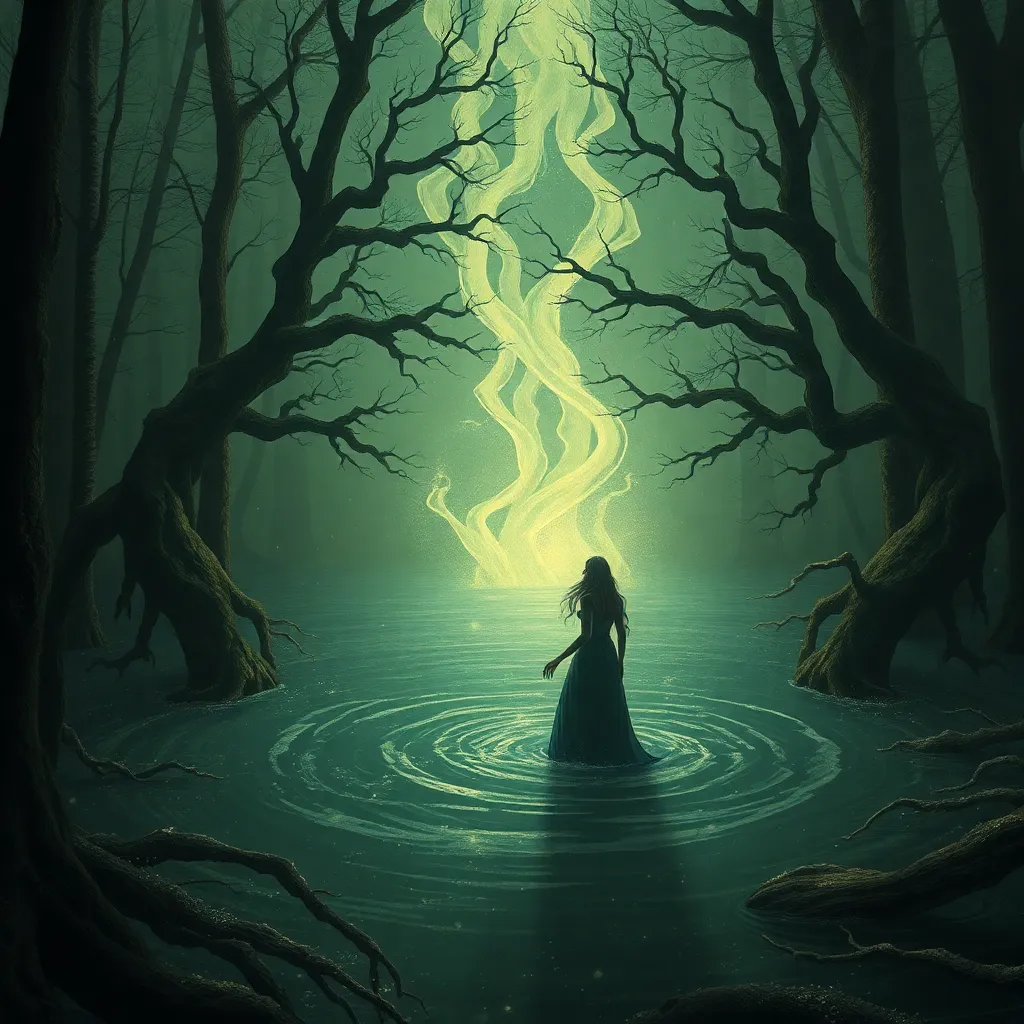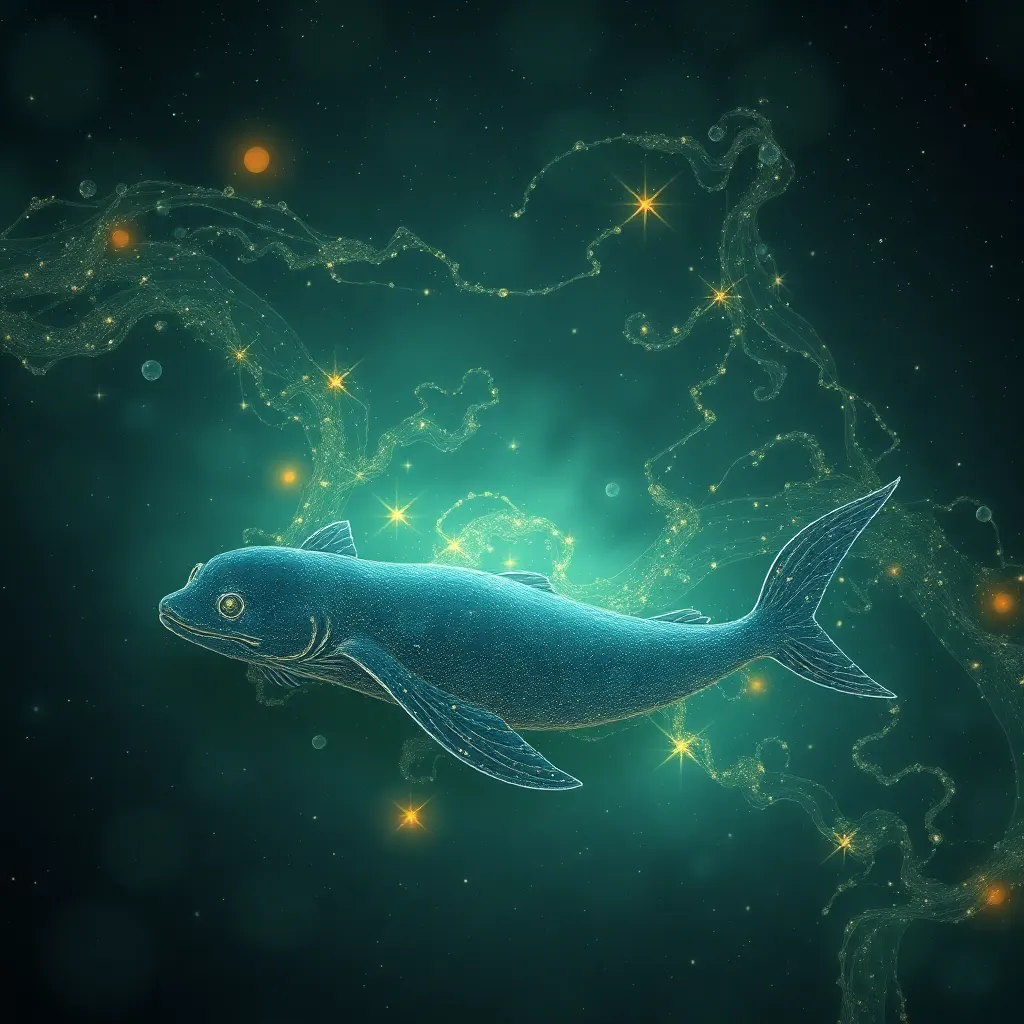Rusalka and the Cycle of Life and Death: Understanding the Role of Water Spirits in Slavic Cosmology
I. Introduction
In Slavic folklore, Rusalka is a captivating figure, often depicted as a beautiful water spirit associated with lakes, rivers, and other bodies of water. These enchanting beings embody the intricate relationship between humanity and nature, particularly the life-giving and life-taking properties of water. Water spirits, including Rusalka, hold significant importance in Slavic cosmology, symbolizing the cycles of life, death, and rebirth.
The purpose of this article is to explore the deep connection between Rusalka and the cycles of life and death, shedding light on her role in Slavic mythology, folklore, and cultural practices.
II. The Mythological Origins of Rusalka
A. Historical context of Rusalka in Slavic mythology
The origins of Rusalka can be traced back to ancient Slavic beliefs, wherein water was revered as a life source. Rusalka is often seen as the spirit of a young woman who died tragically, particularly by drowning. This narrative of untimely death is central to the character of Rusalka, intertwining her existence with themes of loss and longing.
B. Variations of Rusalka across different Slavic cultures
Across various Slavic cultures, the depiction of Rusalka varies significantly:
- In Russian folklore: Rusalka is often portrayed as a beautiful maiden who lures men to watery graves.
- In Ukrainian traditions: Rusalka is celebrated with rituals that honor the spirit of water and fertility.
- In Polish mythology: Rusalka can be both a beneficent spirit, helping with crops, or a vengeful figure.
C. Symbolism of water and its ties to femininity and fertility
Water is a powerful symbol of femininity, fertility, and transformation in Slavic cosmology. Rusalka embodies these qualities, representing both the nurturing aspect of water and its potential for destruction. This duality is essential in understanding her role within the broader context of life and death.
III. Rusalka in Folklore and Literature
A. Depictions of Rusalka in folk tales and songs
Rusalka appears in numerous folk tales and songs, often characterized by her ethereal beauty and tragic fate. These narratives highlight her connection to water and its mysteries, reflecting the cultural significance of water spirits. Folk tales often warn of her allure, emphasizing the dangers of straying too close to the water’s edge.
B. Influence of Rusalka on modern interpretations in literature and arts
The figure of Rusalka has inspired various modern adaptations in literature, music, and visual arts. Notable works include:
- Antonín Dvořák’s opera “Rusalka”: A poignant retelling of the Rusalka myth, emphasizing themes of love and sacrifice.
- Literary adaptations: Contemporary authors often explore Rusalka’s duality, portraying her as a complex character embodying both hope and despair.
C. The dual nature of Rusalka as both benevolent and malevolent
Rusalka’s character is not strictly defined as good or evil; she embodies elements of both. This duality reflects the unpredictable nature of water—capable of nourishing life while also being a force of danger. This complexity has made Rusalka a compelling figure in folklore and literature.
IV. The Rusalka as a Symbol of Life and Death
A. The cycle of rebirth and transformation associated with water
Water is intrinsically linked to the cycle of life and death, symbolizing rebirth and transformation. Rusalka, as a water spirit, represents these cycles, illustrating how life emerges from death and how natural processes are interconnected.
B. Rusalka’s connection to fertility and the growth of crops
In many Slavic cultures, Rusalka is associated with fertility and the abundance of nature. Her presence is believed to promote the growth of crops and ensure a bountiful harvest. This connection highlights the importance of water in agricultural practices and the reliance on natural cycles for sustenance.
C. The role of Rusalka in mourning and the transition between life and death
Rusalka also plays a significant role in the rituals surrounding mourning and death. She is often invoked during funerals and memorials, symbolizing the transition between the living and the deceased. This aspect of her character underscores the intertwining of life and death in Slavic cosmology.
V. Seasonal Rituals and the Rusalka
A. Celebrations honoring Rusalka in Slavic traditions
Seasonal celebrations honoring Rusalka are common in Slavic cultures. These rituals often take place during the summer months, coinciding with the fertility of the earth and the abundance of water.
B. Rituals associated with water and the natural cycles
Rituals that involve water, such as cleansing and offerings, are prevalent. These practices serve to honor Rusalka and ensure her favor, which is believed to bring prosperity and protection to the community.
C. The role of Rusalka in agricultural practices and seasonal changes
Rusalka’s influence on agriculture is significant. Communities often perform rites to invoke her blessings for a good harvest, reflecting the deep relationship between water spirits and the cycles of farming.
VI. The Psychological and Cultural Significance of Rusalka
A. Rusalka as a reflection of human fears and desires
Rusalka encapsulates human fears and desires, particularly regarding love, loss, and the unknown. Her tragic story resonates with the human experience, making her a powerful symbol in folklore.
B. The role of water spirits in understanding death and the afterlife
Water spirits like Rusalka provide a framework for understanding death and the afterlife in Slavic cultures. They embody the mystery surrounding these themes, offering comfort and reflections on mortality.
C. Impact of Rusalka on community identity and memory
Rusalka remains a significant figure in the cultural identity of Slavic communities. Her stories and rituals strengthen communal bonds and preserve collective memory, reflecting the values and beliefs of the people.
VII. Comparative Analysis with Other Water Spirits
A. Similarities and differences with water spirits in other cultures
The archetype of water spirits is not unique to Slavic folklore. Comparative analysis reveals similarities and differences with water spirits from other cultures:
- Greek mythology: Naiads, like Rusalka, are water nymphs associated with rivers and streams, often embodying similar dualities.
- Japanese folklore: Yurei, spirits of the drowned, share themes of tragedy and longing akin to Rusalka’s narrative.
B. Analysis of the universal themes of life, death, and rebirth
Across cultures, water spirits often symbolize the cycle of life, death, and rebirth, highlighting a universal understanding of these themes. The significance of water as a life-giving element transcends cultural boundaries.
C. The significance of water as a spiritual element across cultures
Water is universally recognized as a spiritual element, representing purification, transformation, and the unknown. This commonality reinforces the importance of water spirits in various mythologies and their roles in human experience.
VIII. Conclusion
A. Summary of Rusalka’s role in the cycle of life and death
Rusalka serves as a profound symbol of the cycle of life and death within Slavic cosmology. Her dual nature and connection to water illustrate the complexities of existence, emphasizing the interwoven relationships between life, death, and rebirth.
B. Reflection on the enduring legacy of water spirits in Slavic cosmology
The legacy of water spirits like Rusalka endures in Slavic traditions, reflecting deep cultural values and beliefs. These spirits remain a vital part of the folklore, continuing to shape the understanding of nature and the human experience.
C. Final thoughts on the significance of water in human culture
Ultimately, Rusalka and similar water spirits illuminate the intricate relationship between humanity and nature, reminding us of the power and mystery of water. As we explore these connections, we gain insights into our fears, desires, and the cycles that define our existence.



